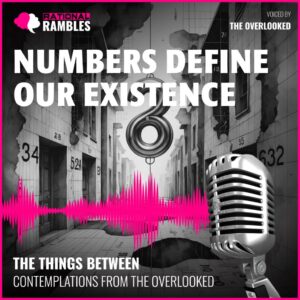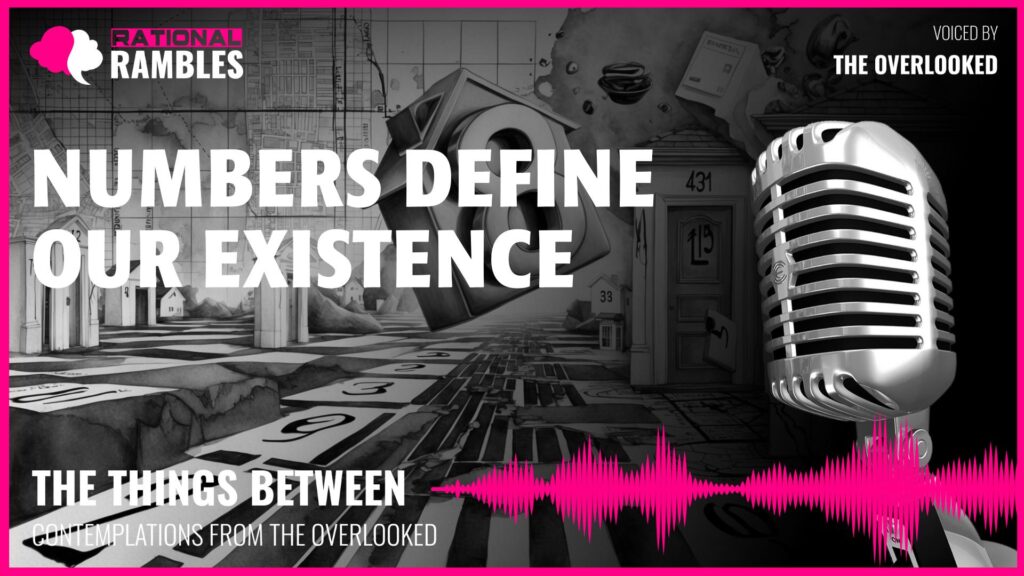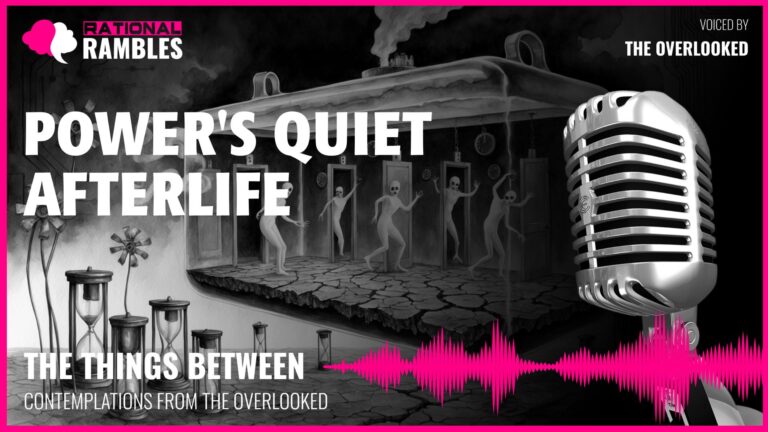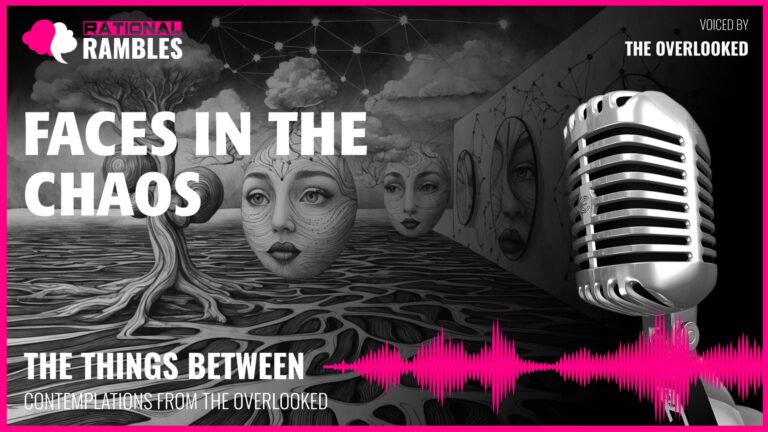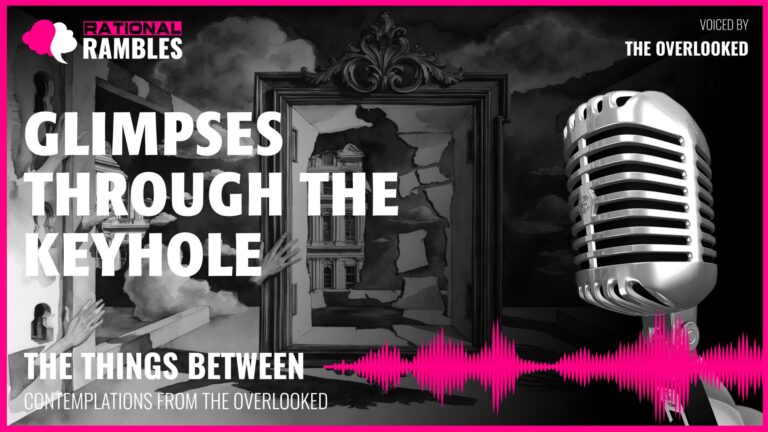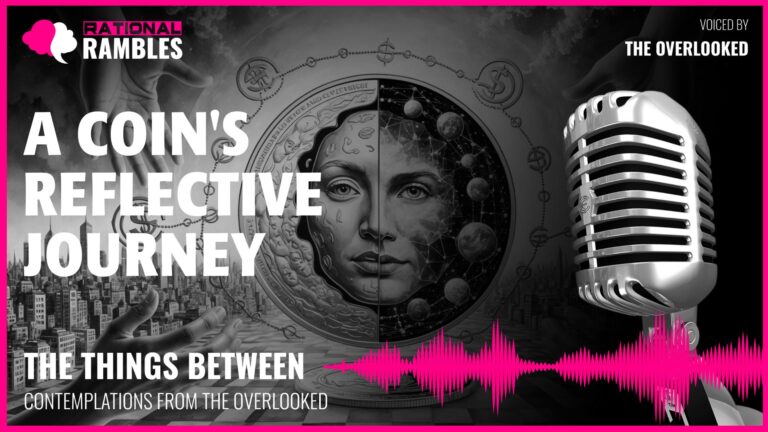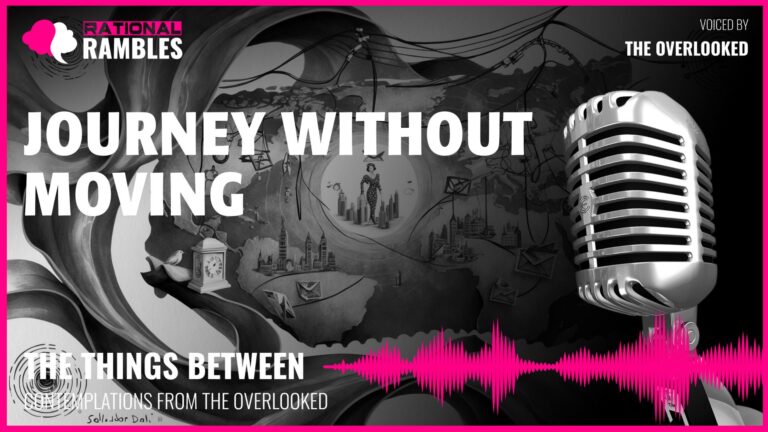The Numerical Order: How Symbols Shape Our Reality and Define Our Existence
Introduction
In the vast tapestry of human civilization, few innovations have proven as transformative as our systems of categorization and identification. Among these, numerical ordering stands as perhaps the most fundamental and ubiquitous. Numbers pervade every aspect of our existence, from the addresses that locate our homes to the timestamps that structure our days. They are simultaneously abstract mathematical concepts and concrete tools for navigating physical reality—a curious duality that invites deeper philosophical reflection.
This peculiar intersection—where abstract idea meets tangible reality—offers a unique lens through which we can examine fundamental questions about human cognition, social organization, and the nature of existence itself. How do symbols like numbers bridge the gap between abstract thought and concrete reality? What does our reliance on numerical systems reveal about human consciousness and our need to impose order on a chaotic universe? And what philosophical implications arise from our creation of this parallel symbolic universe that maps onto physical reality?
By exploring the seemingly mundane yet profoundly significant role of numerical identification in human society, we can uncover insights about the nature of meaning, identity, permanence, and our relationship with the built environment. From the ancient development of counting systems to contemporary digital navigation tools, numbers have silently shaped how we perceive and interact with our world, often in ways we fail to consciously recognize.
The Duality of Numbers: Between Abstraction and Physicality
Numbers exist in a curious ontological space. They are, on one hand, purely abstract concepts—mental constructs that exist only in the realm of thought. Yet simultaneously, they manifest in the physical world as tangible objects: the house number affixed to a building, the digits displayed on a clock face, the numerals printed on a page. This duality raises fascinating philosophical questions about the nature of reality and the relationship between abstract concepts and physical objects.
The Ontological Status of Mathematical Objects
The debate about the nature of mathematical entities has a rich philosophical history. Platonists, following the tradition established by Plato himself, argue that mathematical objects—including numbers—exist in an abstract realm independent of human thought, a position known as mathematical realism. From this perspective, humans discover rather than invent mathematical truths. Numbers like 47 would exist even if no human mind had ever conceived them.
Opposed to this view are the nominalists and formalists, who contend that mathematical objects are either linguistic constructions or formal symbols within a system, having no independent existence outside human thought and language. In this view, numbers are human inventions, tools created to help us make sense of quantity and order.
The physicalization of numbers—such as a house number mounted on a building—presents an interesting case study for this philosophical debate. The physical numeral “47” screwed to a building’s facade is clearly a human-made object, yet it represents an abstract concept that some would argue exists independently of human cognition. The house number thus exists simultaneously as:
- A physical object made of metal, ceramic, or other materials
- A representation of an abstract mathematical concept
- A functional element in a human-designed system of spatial organization
Embodied Abstraction: When Concepts Become Things
The physical manifestation of numbers represents what we might call “embodied abstraction”—the process by which abstract concepts are given concrete form in the physical world. This phenomenon is not limited to numbers; language, art, and architecture all represent abstract ideas given physical expression. However, numbers present a particularly pure example of this process.
A house number serves as a bridge between conceptual and physical reality. When the postal worker mutters “forty-seven” while searching for an address, they are engaging with both the physical object and the abstract concept it represents. The number becomes momentarily elevated in human consciousness, performing its essential function of transforming abstract spatial relationships into navigable reality.
This dual nature of numbers—as both idea and object—reflects a deeper truth about human cognition. We think through and with physical objects, offloading cognitive processes onto the material world. The physical numeral doesn’t merely represent the abstract concept of “47”; it extends human cognitive capacity by externally manifesting and preserving information that would otherwise need to be remembered.
The Systemization of Space: Humanity’s Order-Making Impulse
Our elaborate systems of numerical identification reveal a profound aspect of human nature: our persistent drive to impose order on the chaos of existence. From the ancient Babylonian development of mathematics to the precise GPS coordinates of today, humans have continuously sought to tame space through measurement, categorization, and identification.
The Evolution of Spatial Organization
The history of human civilization can be read partly as a history of increasingly sophisticated systems for organizing space. Early human settlements might have identified dwellings by physical characteristics, family names, or relative positions (“the house with the red door,” “the Smith family home,” “the building near the old oak”). These systems were functional for small communities where interpersonal knowledge could supplement vague identifiers.
As cities grew and social organization became more complex, the need for more precise identification systems increased. The Romans developed early street naming and building numbering systems for tax collection and administrative purposes. By the 18th century, European cities began implementing comprehensive house numbering systems, with Paris adopting sequential numbering in 1779 and the odd-even distribution system emerging in the 19th century.
This evolution reflects not just practical need but a deeper human impulse toward creating intelligible order. The seemingly mundane house number represents centuries of human effort to transform the chaotic distribution of built structures into a coherent, navigable system. Each number on each building participates in this vast project of spatial rationalization.
The Psychological Need for Order
Why this persistent drive to categorize, to number, to name? Psychological research suggests that humans have an innate need for cognitive closure—a desire for definite knowledge and an aversion to ambiguity. We are pattern-seeking creatures who experience psychological discomfort when confronted with disorder or uncertainty.
Our numerical systems of identification can be understood as collective responses to this psychological need. House numbers transform the potentially overwhelming complexity of urban space into a comprehensible system. They convert the question “Where is this building located?” from a problem requiring complex spatial reasoning and contextual knowledge into a simple matter of numerical identification.
There’s something profoundly reassuring about such systems. In a universe characterized by entropy and uncertainty, human-created ordering systems provide islands of predictability and control. The sequence of house numbers on a street—evens on one side, odds on the other—imposes a rational structure that makes the environment not just navigable but psychologically manageable.
Yet this ordering impulse is not without philosophical implications. By imposing our human systems of categorization on the world, we may be projecting a structure that exists more in our minds than in reality itself. The question arises: are we discovering natural patterns in the world or creating artificial ones to satisfy our psychological needs?
Identity and Designation: The Power of Naming
The act of numerical designation is fundamentally an act of naming, and naming carries profound philosophical significance. Through assigning identifiers like house numbers, humans participate in a process of world-creation that shapes not just how we navigate space but how we conceptualize reality itself.
The Philosophy of Naming
Philosophers from Plato to Wittgenstein have wrestled with the relationship between names and the things they designate. In his dialogue “Cratylus,” Plato explores whether names have intrinsic connections to their referents or are merely conventional. Modern philosophy generally favors the view that naming is largely conventional—we could use “46” instead of “47” to designate a particular house without any inherent wrongness, provided everyone adopted the new convention.
Yet numerical designation differs from ordinary naming in important ways. Unlike proper names, which typically serve only to designate, numbers carry independent mathematical properties and relationships. When we designate a building as “47,” we place it within a numerical sequence, implicitly positioning it between 46 and 48, establishing its position within an ordered system.
This highlights what philosophers of language call the “descriptive” versus “designative” functions of names. House numbers both designate specific locations and describe their positions within ordered space. This dual function gives numerical identification a special status in our symbolic systems—they don’t merely label; they locate within a structured conceptual framework.
Numbers as Identity-Conferring Designations
Beyond their practical function, numbers often contribute to the identity of what they designate. Consider iconic addresses like 10 Downing Street or 1600 Pennsylvania Avenue. The numerical component of these addresses has become inextricably linked to the identity of the buildings and institutions they house. The number doesn’t merely locate; it becomes part of the essence of what is being designated.
On a more ordinary level, residents often incorporate their house numbers into their sense of home identity. “We’re number 47” becomes a shorthand for expressing one’s place in the neighborhood geography. The number, originally assigned for purely functional reasons, is absorbed into the personal and social identity associated with the dwelling.
This phenomenon points to a broader philosophical insight: designations that begin as external and arbitrary can become constitutive of identity through social practice and psychological internalization. The originally arbitrary assignment becomes, over time, essential to how both residents and others conceptualize the place.
The Ethics of Categorization
Systems of categorization and identification are never entirely neutral. They reflect and reinforce particular ways of organizing the world that carry implicit values and social implications. House numbering systems, for instance, typically prioritize navigational efficiency over other possible organizing principles like historical significance, community relationships, or ecological features.
In many indigenous cultures, locations were traditionally identified through narrative descriptions relating to natural features, historical events, or community activities—a fundamentally different approach to spatial organization than numerical sequencing. The global standardization of address systems represents not just a practical development but the ascendance of a particular cultural approach to spatial organization.
This raises ethical questions about whose ordering systems become dominant and what values they embody. The apparent neutrality of numbers can mask the culturally specific nature of how we organize space. By recognizing the constructed nature of our identification systems, we open possibilities for imagining alternative ways of designating and relating to our environments.
Permanence and Change: Numbers as Anchors in Temporal Flux
One of the most striking philosophical aspects of numerical designations like house numbers is their relative permanence amidst constant change. As residents come and go, as buildings are renovated or repainted, as neighborhoods transform, the numerical identifiers typically remain constant. This durability gives numerical designations a special role as anchors of continuity in the flux of temporal existence.
The Paradox of Identity Through Time
The ancient Greek philosopher Heraclitus famously observed that one cannot step into the same river twice—highlighting the philosophical problem of identity persistence through change. If a building’s facade is renovated, its interior reconfigured, its purpose changed from residential to commercial, and all its original occupants replaced, in what sense is it “the same building” it was fifty years ago?
The house number offers one answer to this puzzle. The persistence of the numerical designation provides a thread of continuity, a stable identifier that spans changes in physical composition and function. Number 47 remains number 47, even as the physical structure and human occupants it designates undergo complete transformation.
This points to a broader philosophical insight about how systems of designation help constitute durable identities in a world of flux. The persistence of the identifier creates a kind of narrative continuity that allows us to speak meaningfully about “the same place” across time, despite material and functional changes.
Numbers as Historical Witnesses
The relative permanence of numerical designations gives them a unique perspective as “witnesses” to historical change. A house number silently observes residents coming and going, renovations and repairs, births and deaths, celebrations and sorrows. It connects present occupants to all the previous inhabitants who have recognized the same numerical designation as marking “their” place.
This temporal perspective invites reflection on our own transience. The typical house number will outlast its current residents, maintaining its vigilant position long after they have moved on or passed away. It will likely see multiple human lifespans, connecting generations who may never meet but who share the experience of identifying with the same spatial location.
At the same time, house numbers themselves are not truly permanent. Buildings are eventually demolished, streets reconfigured, numbering systems revised. Even the most durable designation exists within a larger context of historical change. This tension between relative permanence and ultimate impermanence mirrors broader philosophical questions about meaning and legacy in a transient world.
Functionality and Invisibility: The Paradox of Essential Overlooking
One of the most curious aspects of house numbers and similar designations is their simultaneous essentiality and invisibility. They are critically important for the functioning of numerous social systems, yet they operate largely beneath conscious awareness, becoming visible only when they fail to perform their designated function.
The Infrastructure of the Overlooked
House numbers belong to what philosopher Bruno Latour might call the “infrastructure of modernity”—the vast network of standardized systems that make contemporary social life possible while remaining largely unnoticed. Like electrical grids, sewage systems, and internet protocols, address systems operate in the background of consciousness, becoming visible only in moments of breakdown or disruption.
This invisibility is, paradoxically, a sign of their success. A well-functioning house number performs its identifying function so seamlessly that it requires no conscious attention. The mail carrier glances at it, confirms the location, and proceeds with delivery without reflection. The food delivery driver, the emergency responder, the visiting friend—all rely on the house number while rarely thinking consciously about it.
Yet this very invisibility may cause us to undervalue the philosophical significance of such systems. The unnoticed background structures of daily life often have the most profound influence on how we experience and navigate reality. By bringing these background systems into conscious reflection, we can better understand the constructed nature of our social world.
The Aesthetics of the Functional
Despite their primarily functional nature, house numbers also participate in the aesthetic dimension of the built environment. Their size, material, typography, and placement contribute to the visual identity of a building’s facade. Some are ornate, custom-designed elements that express the aesthetic sensibilities or personal identity of the residents. Others are mass-produced, utilitarian objects that prioritize legibility over beauty.
This aesthetic dimension reveals that even our most functional designations are never merely functional. They inevitably carry expressive aspects, participating in what philosopher Yuriko Saito calls “everyday aesthetics”—the often overlooked aesthetic dimensions of ordinary objects and experiences.
The dual nature of house numbers as both functional tools and aesthetic objects highlights the false dichotomy between utility and beauty. Even the most mundane identifying markers participate in the aesthetic fabric of our environments, affecting our sensory experience of place in subtle but significant ways.
Digital Transformation: Numerical Identity in the Age of GPS
The relationship between physical numerical designations and spatial identification is evolving rapidly in the digital age. GPS coordinates, digital mapping services, and location-based applications are transforming how we navigate and conceptualize space, potentially changing the philosophical significance of traditional identifying systems like house numbers.
From Visible Markers to Invisible Coordinates
Traditional house numbers are visible, physical objects that mark locations in publicly perceptible ways. GPS coordinates, by contrast, are invisible mathematical relationships that locate positions with precision but without physical manifestation. This shift from tangible to intangible identification systems represents a significant conceptual transformation in how we relate to space.
When navigation relies on digital coordinates rather than visual identification of physical markers, our phenomenological experience of wayfinding changes. Rather than scanning building facades for identifying numbers, we follow blue dots on screens, guided by algorithmic calculations invisible to our senses. This creates a more mediated relationship with our physical environment, interposing technological systems between direct perception and spatial understanding.
Yet physical house numbers persist even as digital alternatives proliferate. This coexistence of old and new systems creates a layered reality where multiple modes of identification operate simultaneously—the weathered “47” on a building facade exists alongside the precise GPS coordinates designating the same location in digital space.
Resilience of the Physical
Despite predictions that digital systems would render physical identifiers obsolete, traditional house numbers demonstrate remarkable persistence. This resilience stems partly from their independent functionality—they continue to serve their purpose even when digital systems fail due to power outages, technical glitches, or dead batteries.
More fundamentally, physical numbers offer a direct, unmediated way of identifying locations that requires no technological intermediation. Unlike GPS coordinates, they can be perceived directly by human senses, communicated easily in conversation, and remembered without technological assistance. Their materiality provides a kind of phenomenological immediacy that digital coordinates lack.
This persistence suggests that physical and digital identification systems serve complementary rather than competing functions. Physical numbers provide human-scale, perceptually accessible identification, while digital coordinates offer mathematical precision and systemic integration. Each has philosophical advantages and limitations that make them valuable in different contexts.
Symbolic Dimension: Numbers Beyond Identification
While house numbers function primarily as identifiers, numbers in human culture carry rich symbolic associations that inevitably influence how we relate to numerical designations. These cultural and psychological dimensions add layers of meaning beyond mere identification, affecting our relationship with the built environment in subtle but significant ways.
Numerological Associations and Cultural Meanings
In many cultures, numbers carry symbolic associations that influence how people relate to numerical designations. The number 13 is considered unlucky in Western tradition, leading some buildings to skip from floor 12 to floor 14. In Chinese culture, the number 4 is associated with death due to phonetic similarity, while 8 is considered auspicious due to its association with prosperity.
These cultural associations can affect property values, personal comfort, and even physical health through the nocebo effect, where negative expectations lead to real negative outcomes. A resident who believes their house number is unlucky may experience genuine anxiety or attribute misfortunes to the numerical designation, regardless of whether any causal connection exists.
From a philosophical perspective, this illustrates how meaning is constructed at the intersection of material reality and cultural interpretation. The same physical numeral—”47″—might be experienced as neutral, lucky, or unlucky depending on the cultural framework within which it’s interpreted. The designation gains meaning not just from its identifying function but from its position within systems of cultural significance.
Personal Psychological Associations
Beyond cultural symbolism, individuals develop personal associations with their house numbers through lived experience. A number initially assigned for purely administrative reasons becomes imbued with personal significance through its connection to life events, relationships, and daily routines.
After years of residence, the number “47” might evoke memories of family gatherings, personal milestones, or familiar routines. The initially arbitrary designation becomes meaningful through its embeddedness in personal narrative, demonstrating how even the most utilitarian systems can be incorporated into the fabric of personal meaning-making.
This psychological dimension reveals how numerical designations, like all elements of our built environment, are constantly being invested with human significance beyond their intended functions. The philosopher Karsten Harries describes architecture as a form of “interpretation of a way of life,” and even mundane elements like house numbers participate in this interpretive function, becoming carriers of personal and cultural meaning.
The Silent Witness: Numerical Designations as Observers of Human Life
There is something poetically compelling about conceptualizing house numbers as silent witnesses to human drama. Fixed in place while life unfolds around them, they observe without judgment or intervention, maintaining their silent vigil through generations of human activity.
The Perspective of Permanence
The relative permanence of house numbers gives them a unique “perspective” on human temporality. While humans experience time as a flow of events, the house number remains fixed, observing the cycles of daily routines, seasonal changes, and generational transitions from a position of relative stability.
This imagined perspective invites philosophical reflection on the relationship between permanence and change, between the enduring and the ephemeral. The contrast between the relatively static nature of the numerical designation and the dynamic flow of human activity it witnesses highlights the temporal dimension of existence—what Martin Heidegger might call our fundamental condition of “being-in-time.”
By imaginatively adopting the perspective of these silent witnesses, we gain a vantage point slightly removed from our normal temporal immersion, allowing us to see patterns and continuities in human experience that might otherwise remain invisible from within the flow of lived experience.
The Ethics of Observation
The concept of the house number as witness also raises questions about the ethics of observation and presence. Unlike human observers, whose gaze may influence behavior through awareness of being watched, the house number observes without affecting what it witnesses. Its presence is registered but its observational capacity goes unacknowledged.
This imagined form of non-interventionist observation presents an interesting contrast to contemporary concerns about surveillance. In an era of increasing camera surveillance, data collection, and digital monitoring, the house number represents an older, more benign form of “witnessing” that records nothing, reports to no one, yet maintains its silent presence through all that unfolds before it.
The philosophical tradition of phenomenology emphasizes the importance of presence and perception in constituting reality. If a tree falls in a forest with no one to hear it, does it make a sound? If human dramas unfold before a house number, with no conscious entity to perceive them, are they witnessed in any meaningful sense? These questions highlight the complex relationship between observation, consciousness, and the constitution of meaningful events.
Collective Systems: Individual Markers in Larger Frameworks
Individual house numbers derive much of their meaning and functionality from their participation in larger systems of orderly designation. A single number like “47” gains significance partly through its relationship to other numbers in the sequence and its position within broader frameworks of spatial organization.
Systems Thinking and Emergent Properties
Address systems illustrate fundamental principles of systems thinking—the understanding that collections of interrelated elements create properties and capabilities that transcend the individual components. A single house number has limited utility in isolation; its full functionality emerges through its integration into street numbering systems, postal networks, emergency response protocols, and mapping databases.
This systemic nature highlights the social dimension of seemingly individual objects. House numbers are not truly independent entities but nodes in vast networks of spatial organization that span neighborhoods, cities, and ultimately the entire globe. The local sequential organization of individual streets connects to regional postal codes, national addressing standards, and international location systems.
From a philosophical perspective, this illustrates how meaning often emerges from relationships rather than residing in isolated objects. The significance of “47” derives largely from its position between 45 and 49, its location on a particular street, and its integration into systems that enable navigation, delivery, and identification.
The Balance of Standardization and Individuality
House numbering systems reflect a fundamental tension between standardization and individuality that runs through many aspects of social organization. Effective addressing requires sufficient standardization to ensure navigability and system-wide compatibility. Yet within these standardized frameworks, room remains for individual expression through the aesthetic presentation of the numbers themselves.
This balanced relationship between system and component, between standardization and customization, reflects broader philosophical questions about the relationship between individual and society. How do we create systems that enable collective coordination while preserving space for individual identity and expression? The humble house number, both standardized in its numerical value and potentially individualized in its physical manifestation, embodies this perennial social question.
The philosopher John Searle distinguishes between “brute facts” that exist independently of human institutions and “institutional facts” that depend on collective agreement. House numbers are quintessential institutional facts—their meaning and function exist only within systems of collective agreement about spatial organization and identification. This highlights how much of human reality is socially constructed through systems of shared meaning rather than existing independently of human cognition.
The Metaphysics of Identification: What Numbers Reveal About Being and Knowing
Our systems of numerical identification ultimately point toward fundamental philosophical questions about the nature of reality and how we come to know it. The seemingly mundane practice of assigning numbers to locations opens onto deeper metaphysical territory concerning the relationship between symbols and reality, the construction of meaningful order, and the human need to name and categorize the world.
Representation and Reality
Address systems exemplify the complex relationship between representation and reality that has preoccupied philosophers from Plato to Baudrillard. Does the system of spatial numbering simply represent a pre-existing reality, or does it actively participate in constructing that reality? The answer seems to be both: house numbers represent spatial relationships that exist independently of the numbering system, yet they also create a new layer of reality through which we navigate and understand those spaces.
This duality highlights what philosopher Nelson Goodman called “worldmaking”—the process by which humans create versions of reality through systems of symbols, categories, and representations. We do not simply discover the world as it independently exists; we actively construct it through our naming, measuring, and ordering practices. House numbers participate in this world-construction, imposing human meaning on physical space.
At the same time, effective address systems must correspond to actual spatial relationships to function properly. This points toward a moderate realism that recognizes both the constructed nature of our symbol systems and their necessary correspondence with independent reality—what philosopher Hilary Putnam called “internal realism.”
The Question of Necessity
House numbers prompt us to consider the philosophical distinction between necessity and contingency. Are our systems of numerical identification necessary in some fundamental sense, or merely contingent conventions that could have developed differently? This question connects to broader philosophical debates about necessity in human social systems and knowledge structures.
From one perspective, some system of spatial identification seems necessary for complex social organization, particularly in urban environments where visual distinction and personal familiarity become insufficient for navigation. Yet the specific form this takes—sequential numerical designation—appears contingent rather than necessary. Other cultures have developed different systems based on named districts, descriptive locations, or other organizing principles.
This interplay between necessity and contingency reflects what philosopher Michel Foucault called the “historical a priori”—conditions that are necessary within a particular historical and cultural context but not universally necessary across all possible human arrangements. House numbers illustrate how systems can seem inevitable and natural from within a particular cultural framework while remaining historically contingent constructions when viewed from a broader perspective.
Conclusion: The Philosophical Significance of Everyday Order
Our exploration of house numbers and numerical designation systems reveals how deeply philosophical questions are embedded in the most ordinary aspects of daily life. What initially appears as a purely practical system for identifying locations opens onto profound questions about the nature of reality, the human drive toward order, the relationship between symbols and their referents, and the tension between permanence and change.
These mundane markers remind us that philosophy is not confined to abstract theorizing disconnected from everyday experience. Rather, philosophical questions arise from and return to the concrete practices through which we make sense of our world. The house number, positioned at the intersection of abstract numerical concepts and concrete physical reality, embodies this connection between the philosophical and the practical.
Perhaps most significantly, our systems of numerical identification highlight the fundamentally symbolic nature of human existence. We navigate not just a physical world but a world of meanings, a parallel universe of symbols that maps onto and transforms physical reality. The number affixed to a building does not change its physical structure, yet it fundamentally alters how that structure exists within human understanding and social practice.
In the end, house numbers exemplify what might be called the infrastructure of meaning—the often-invisible systems through which we transform raw existence into an intelligible, navigable world. By bringing these background systems into conscious reflection, we gain insight not just into specific symbolic practices but into the broader human project of creating meaningful order in a universe that does not come pre-labeled for our convenience.
As we navigate streets guided by these numerical markers, we participate in a vast collective project of world-making that spans generations and cultures. The humble house number, easily overlooked in its familiar functionality, stands as a testament to this ongoing human endeavor to transform space into place, chaos into order, and mere existence into meaningful being.


